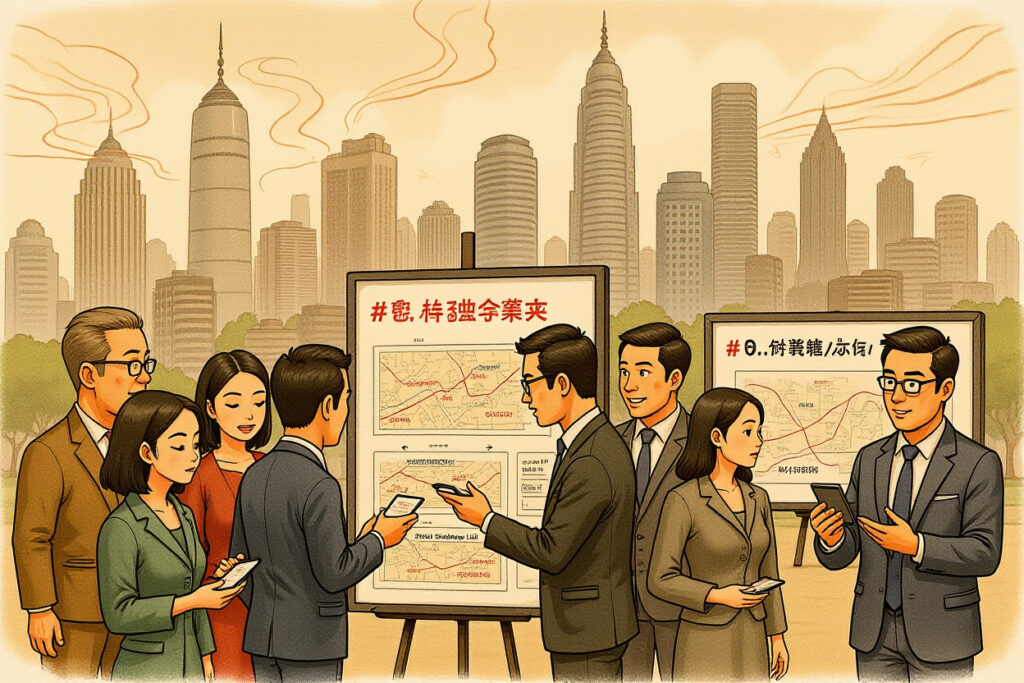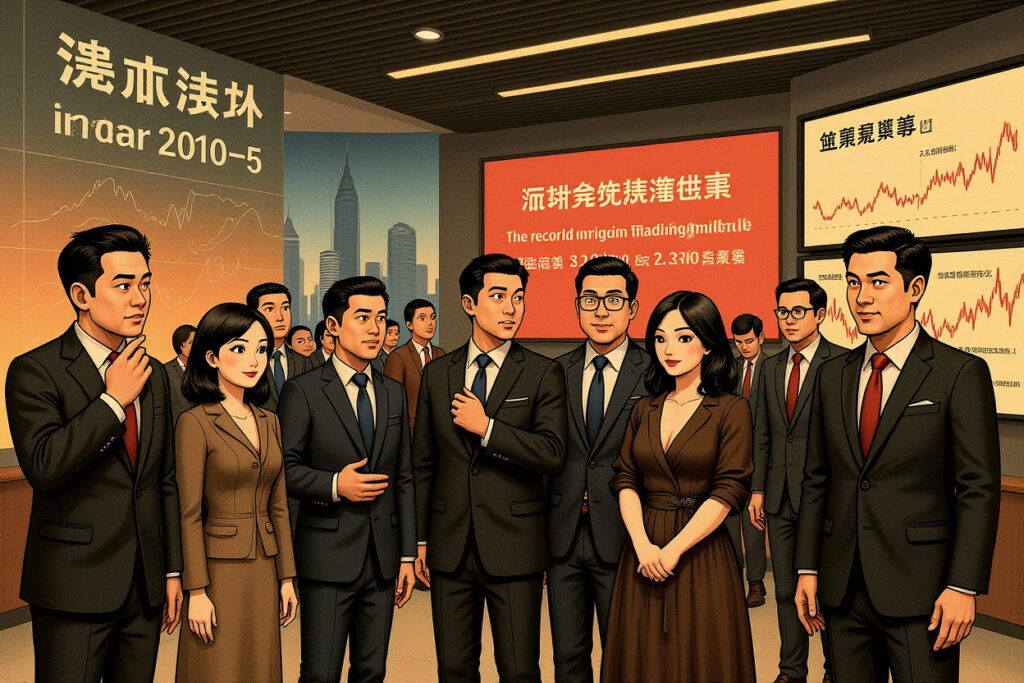The New Silk Road: China’s Strategic Pivot Westward
Central Asia has emerged as the focal point of China’s economic strategy, with trade volumes and investment flows showing remarkable growth. The region’s strategic importance has skyrocketed, evidenced by the presence of five Central Asian leaders at China’s military parade, representing nearly one-fifth of all attending foreign dignitaries. This westward expansion represents a fundamental shift in China’s global economic positioning.
The numbers tell a compelling story: China’s trade with Central Asian nations reached $948 billion in 2024, representing a 104.57% increase from 2019. This growth trajectory continues unabated, with China-Central Asia freight trains making 8,525 journeys in the first seven months of 2025 alone, carrying 658,700 standard containers – increases of 23% and 31% respectively compared to previous periods.
While air connectivity with Europe and America has diminished, flights between China and Central Asia have surged by 103.1%, demonstrating the deepening economic integration. The most striking development comes from investment figures: China’s Belt and Road Initiative directed $5.05 billion to Central Asia in the first half of 2025, a staggering 69% year-on-year increase.
Why Central Asia Matters Now
Geopolitical transformations have positioned Central Asia as China’s most promising external region. The breakdown of traditional trade patterns and supply chain disruptions have accelerated China’s westward expansion, creating new opportunities for strategic positioning and economic cooperation.
Transportation Revolution: Building the Artery of Commerce
The China-Kyrgyzstan-Uzbekistan Railway stands as the cornerstone of China’s westward expansion strategy. Though only 200 kilometers lie within Chinese territory, this project carries immense strategic significance. Chinese leadership has explicitly identified it as a “strategic project for China-Central Asia connectivity and a landmark project of trilateral Belt and Road cooperation.”
This railway will eventually connect to the Trans-Caucasus corridor, forming the third Eurasian land bridge. The route from Kashgar to Europe will shorten by 900 kilometers, reducing transit time by 7-8 days. The engineering challenges are substantial, crossing the Tianshan Mountains and Pamir Plateau with construction difficulties comparable to the Sichuan-Tibet Railway.
Chinese companies including China Railway 14th Bureau Group, China Railway Construction Group, China Railway International, and PowerChina Railway Construction Investment Group are leading the most challenging sections, bringing technical expertise that local authorities lack.
Beyond Railways: Comprehensive Infrastructure Development
China’s infrastructure involvement extends far beyond the flagship railway project. Chinese companies have delivered numerous transformative projects:
– Astana Light Rail: Central Asia’s first urban light rail system, built by China Construction Sixth Engineering Division and Tianjin Rail Transit Group using Chinese standards
– Angren-Pap Railway Tunnel: Central Asia’s longest tunnel, constructed by China Railway Tunnel Group, ending Uzbekistan’s dependence on transit through neighboring countries
– China-Kyrgyzstan-Uzbekistan Highway: Traversing the Pamir Plateau to enhance cargo transportation networks
These projects demonstrate how China’s infrastructure expertise is laying the foundation for Central Asia’s economic development while establishing Chinese companies as regional pioneers.
Energy and Minerals: Securing Strategic Resources
China’s investment focus has evolved from traditional infrastructure toward mineral resources and processing, particularly critical minerals. This shift reflects strategic considerations about political stability, neighborly cooperation, and resource security amid global competition.
Central Asia represents an energy treasure trove: holding 1.8% of global oil reserves, 8.8% of natural gas reserves, and 2.5% of coal reserves. With local consumption representing only a fraction of production capacity, export opportunities abound.
The China-Kazakhstan oil pipeline stretches 2,800 kilometers from Aturau to Alashankou-Dushanzi, annually delivering 20 million tons of crude oil – enough to produce gasoline for 10 million vehicles. The China-Central Asia gas pipeline system, consisting of Lines A, B, C, and D, has delivered over 500 billion cubic meters of gas to China since its inception.
Mineral Wealth Beyond Energy
Central Asia’s mineral resources extend far beyond hydrocarbons:
– 15% of global uranium reserves
– 28% of tungsten reserves
– 30% of chromium reserves
– 25% of lead-zinc deposits
– 15.6% of silver reserves
– 11% of iron ore reserves
– 384 rare earth deposits
Limited industrial capacity and technological constraints have created opportunities for Chinese mining companies to fill critical gaps. Examples include:
– Zijin Mining Group controlling 75% of Tajikistan’s gold production through its Zarafshon joint venture
– China Limaoli Metal Company developing the Syrenata mining complex in Uzbekistan’s Altyntau district, capable of processing 2.4 million tons of ore annually
– Jiangxi Copper Group, China Railway Construction, and China Civil Engineering Construction Corporation investing $300 million in Kazakhstan’s first tungsten processing facility with 3.3 million tons annual capacity
Consumer Markets: Tapping into Growing Prosperity
Infrastructure and industrial development have fueled economic growth across Central Asia, with Kazakhstan’s GDP expanding 6.2% in the first half of 2025. This prosperity has activated consumer markets among the region’s 80 million people, 29% of whom belong to the growing middle class expanding at 6.7% annually.
Chinese consumer goods have found enthusiastic adoption across Central Asia. smartphone manufacturers Huawei, Xiaomi, OPPO, and Vivo have captured significant market share through competitive pricing and features. According to GlobalStats data, these brands held 16.6%, 5.3%, and 4% of Kazakhstan’s market respectively in November 2024.
Automotive brands including Chery, JAC, Great Wall, Changan, and Geely have established strong presence over two decades of operation. In 2024, Chery sold 14,883 vehicles in Kazakhstan, JAC delivered 13,107 units, and Great Wall’s Haval moved 10,983 vehicles – capturing 7.3%, 6.4%, and 5.4% market share respectively.
The Electric Vehicle Revolution
Chinese electric vehicles have become particularly popular among Central Asia’s youth. Social media influencers like Uzbek celebrity Jasur Umirov have showcased their IM L7 acquisitions, while Zeekr owner clubs have emerged in Almaty. Uzbekistan imported over 20,000 Chinese electric vehicles in the first ten months of 2024 – six times the previous year’s volume.
Beyond vehicles and electronics, Chinese products have penetrated numerous consumer categories:
– Electric scooters and motorcycles
– Home appliances and electronics
– Clothing and fashion accessories
– Pharmaceuticals and healthcare products
– Snack foods and consumer goods
Digital platforms including Temu, AliExpress, Alibaba International, TikTok Shop, and WeChat have gained substantial popularity, further integrating Central Asian consumers into China’s digital ecosystem.
Geopolitical Implications: The New Land Power Era
China’s westward expansion represents a fundamental reorientation toward land-based connectivity, echoing classical geopolitical theories about Eurasian dominance. The concept of “land power” advanced by Halford Mackinder – that controlling the Eurasian heartland means controlling the world – finds renewed relevance amid contemporary challenges to maritime trade routes.
China’s simultaneous development of three mega-projects in Western China underscores this strategic reorientation:
– Yarlung Tsangpo hydropower station: 1.2 trillion yuan investment
– Sichuan-Tibet Railway: 300 billion yuan investment
– Xinjiang-Tibet Railway: 500 billion yuan investment
These projects, totaling approximately 2 trillion yuan, facilitate connectivity between China’s western regions and Central Asia, supporting the broader westward expansion strategy.
Central Asia as Strategic Pivot
Central Asia represents more than just an economic opportunity – it serves as the core region of the Silk Road Economic Belt and a crucial支点 for China’s vision of a new political and economic order. The region’s geographic position, resource wealth, and growing markets make it indispensable to China’s future strategic calculations.
The revival of land-based trade routes represents both a practical response to maritime uncertainties and a philosophical return to Eurasia’s historical patterns of exchange and interaction.
Looking Forward: Opportunities and Challenges
China’s westward expansion into Central Asia presents numerous opportunities for businesses and investors across sectors. The region’s infrastructure development needs, consumer market growth, and resource potential create multiple entry points for engagement.
However, challenges remain regarding political stability, regulatory frameworks, cultural differences, and logistical complexities. Successful engagement requires thorough market research, local partnerships, and long-term commitment to regional development.
The momentum behind China’s westward expansion appears sustainable, supported by strategic imperatives and economic complementarities. As traditional trade patterns face uncertainty, Central Asia’s importance will likely continue growing within China’s foreign economic policy.
For businesses considering Central Asian opportunities, the time for serious evaluation is now. Early movers may establish advantageous positions in developing markets, while delayed engagement could mean missing the most attractive opportunities. The westward expansion represents not just a temporary trend but a fundamental reorientation of China’s economic relationships that will shape regional dynamics for decades to come.
Those who recognize the strategic significance of this shift and position themselves accordingly stand to benefit from the transformation underway across Central Asia. The direction is clear: westward expansion represents China’s future, and the future is already unfolding.




